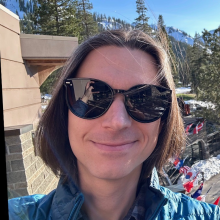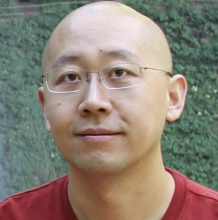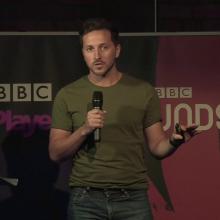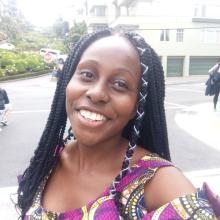Summary
Disclaimer: This summary has been generated by AI. It is experimental, and feedback is welcomed. Please reach out to info@qconlondon.com with any comments or concerns.
Here is a structured summary of the presentation titled "Lessons Learned From Building LinkedIn’s First Agent: Hiring Assistant".
Introduction
Karthik Ramgopal and Daniel Hewlett from LinkedIn introduced the development journey of the Hiring Assistant, highlighting its technical complexities and integration with AI systems. This tool aims to streamline a recruiter's workflow through automation.
Development Timeline
- Initial Experiments: The project began with simple AI products like collaborative articles that used LLMs for content generation.
- Evolving to Conversational Agents: Transitioned to more sophisticated systems like Coachera, featuring chains of prompts for user interaction.
- Current Stage: Now in the "agent era", focusing on task automation using comprehensive prompt graphs and modular architectures.
Architecture and Design
- Modular Approach: The system uses sub-agents and a supervisory agent to manage tasks. This modularity allows parallel development and quality isolation.
- Human-in-the-Loop: Minimal human supervision is incorporated through a feedback loop, enhancing the agent's personalization over time.
- Skill Register: Introduced as a central repository for different tool abstractions to manage execution dynamically.
Technical Innovations
- Use of LLMs: Implemented a mix of general-purpose and fine-tuned LLMs for different functionalities.
- Experiential Memory: The agent uses its interaction history to inform future decisions, allowing for a more contextual response generation.
- Observability Enhancements: The system uses various monitoring tools to ensure reliability despite its non-deterministic nature.
Key Lessons and Challenges
- Interfacing: Shifting from structured to natural language input improved system usability but came with the challenge of potential information loss.
- Quality and Scalability: Moving to automated evaluations from human annotations expedited development times.
- User Experience: Feedback loops, progress indicators, and tooling are crucial in providing an intuitive user interface.
In conclusion, LinkedIn's journey in building the Hiring Assistant showcases the balance between cutting-edge AI technologies and practical application in recruitment, providing insightful learnings for future AI agent developments.
This is the end of the AI-generated content.
Abstract
In October 2024, we announced LinkedIn’s first agent, Hiring Assistant to a select group of LinkedIn customers. Designed to streamline a recruiter’s workflow, Hiring Assistant automates time-consuming tasks, from intake to interviews, allowing recruiters to focus on the most strategic and people-centric aspects of their roles.
Recruiters can upload job descriptions, intake notes, and job postings to the Hiring Assistant, which then uses this information to generate role qualifications and build a pipeline of qualified candidates. Throughout the process, recruiters remain actively involved, and can provide guidance to the Hiring Assistant about its actions to ensure alignment. This continuous feedback loop enables Hiring Assistant to learn each recruiter’s preferences, becoming increasingly personalized and effective over time.
Building this product required pushing the boundaries of using Large Language Models (LLMs) for large-scale automation, achieving personalization at scale while maintaining product quality and upholding our responsible AI principles, and pioneering new UX paradigms for human-agent interaction. This talk will provide an overview of the Generative AI product development evolution at LinkedIn, culminating in the most technically complex product built at LinkedIn using this tech, the Hiring Assistant. We will then delve into the system architecture of the Hiring Assistant, highlighting key design decisions made to ensure efficient scalability, security, robust operability, and thorough quality evaluation. The talk will conclude with key lessons we’ve learned, offering valuable insights for anyone building real-world, production-grade AI agents.
Interview:
What's the focus of your work these days?
Karthik Ramgopal: I am the uber technical lead and strategist for all our Generative AI platform and product initiatives. My primary focus is on advancing platform capabilities to enable the ambitious roadmap of AI agent products we aim to launch through 2025 and beyond.
Daniel Hewlett: I am the technical lead for AI in LinkedIn’s Talent Enterprise Engineering division. My primary focus is on developing the AI capabilities underlying LinkedIn’s new Hiring Assistant, an agent supporting the needs of hirers within the talent marketplace. This involves redesigning the end-to-end search and recommendations ML stack around LLMs for deeper semantic understanding, alongside the complementary development of new Generative AI systems.
What's the motivation for your talk at QCon London 2025?
While there is a lot of literature around building AI agents, they often focus on simple proof-of-concept applications and overlook the challenges inherent in complex, real-world use cases. This talk aims to shed light on these challenges and share insights drawn from our practical experience in building and launching a sophisticated AI agent.
How would you describe your main persona and target audience for this session?
Data Scientists, Application Developers, ML/AI Engineers, Anyone interested in building real world AI agents
Is there anything specific that you'd like people to walk away with after watching your session?
Understand real world opportunities, limitations and challenges in building, evolving and operating production-grade AI agents.
What do you think is the next big disruption in software?
A large part of software development will be offloaded to AI agents who will work seamlessly alongside human developers.
What was one interesting thing that you learned from a previous QCon?
The "Mastering Long-Running Processes in Modern Architectures" talk at QCon 2024 taught me a lot about handling asynchronous long-running workflows, gracefully degrading and appropriately surfacing errors to users. A lot of the lessons learned here have been incorporated into our agentic workflows.
Speaker

Karthik Ramgopal
Distinguished Engineer & Tech Lead of the Product Engineering Team @LinkedIn, 15+ Years of Experience in Full-Stack Software Development
Distinguished Engineer and the Uber technical lead for the Product Engineering team at LinkedIn, leading ~5000 engineers responsible for developing and operating all of LinkedIn’s member and customer-facing products. 15+ years of experience in full-stack software development, design, and architecture, across product and infrastructure engineering teams. Role entails strategically shaping LinkedIn's technical vision across a wide range of domains with hands-on contributions to code and design on specific projects, with a primary focus on Generative AI applications over the past two years.
Find Karthik Ramgopal at:
Speaker

Daniel Hewlett
Principal AI Engineer & Technical Lead for AI @LinkedIn, 12+ Years of Expierence in ML and AI Engineering, Previously @Google
Principal AI Engineer and technical lead for AI in LinkedIn’s Talent Enterprise Engineering division. PhD from University of Arizona. 12+ years of experience in ML and AI engineering across research and product development in the areas of retrieval and ranking for search and recommendations, natural language understanding, and multi-task learning. Worked at Google for 6 years on Deep Learning approaches for Natural Language Understanding and Youtube community intelligence. Responsible for LinkedIn’s technical vision combining LLMs and Generative AI with search and recommendation systems to enhance enterprise productivity at scale. Research publications at conferences including ACL, EMNLP, NeurIPS, and AAAI. Google Scholar, DBLP.






